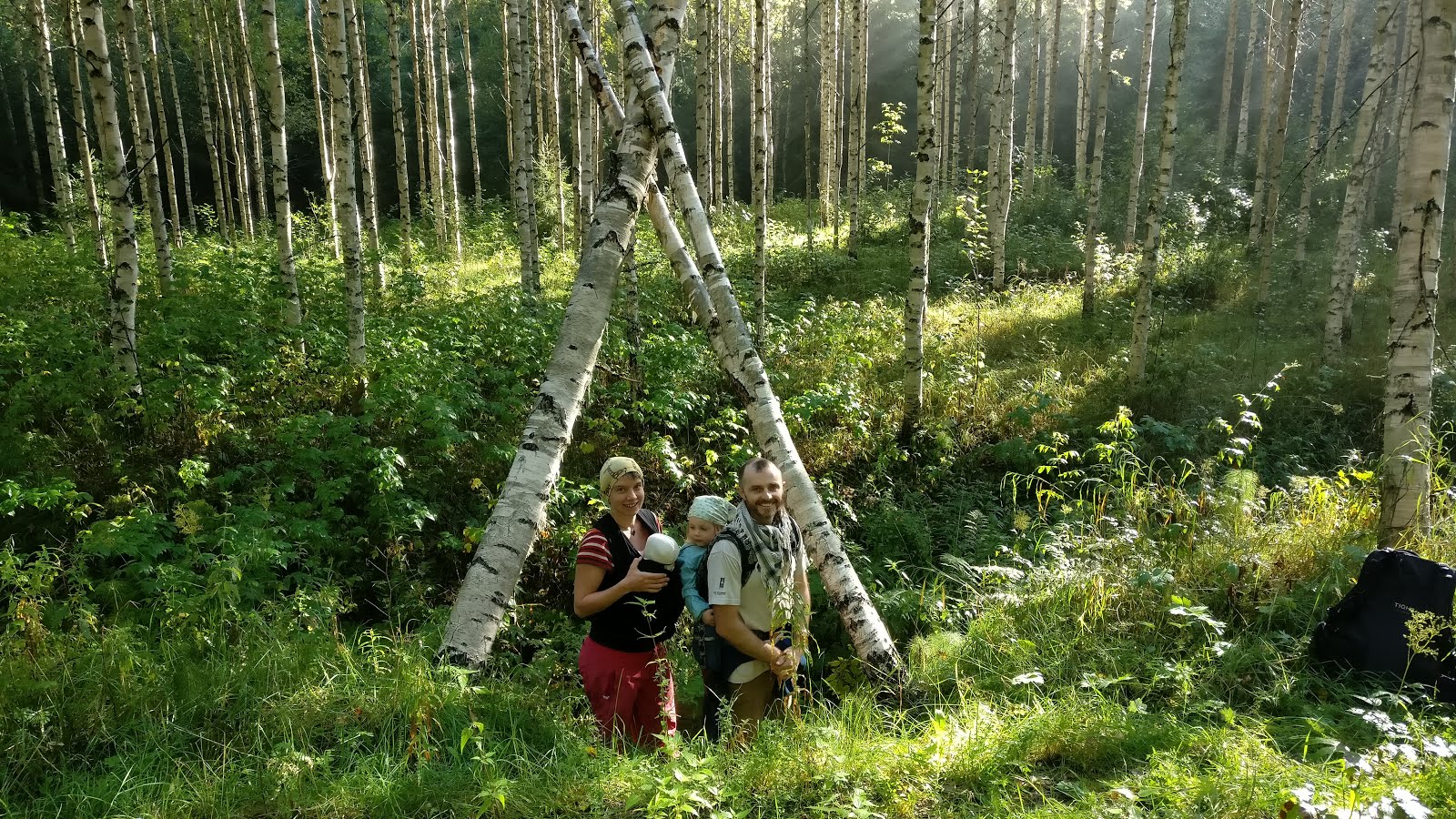So we continued on working right up until Christmas again last year in an attempt to get the roof finished before the winter, but as you will see it did not quite get there. All of the major structural stuff is done but only one third of the roof is covered with used corrugated galvanized sheets. We chose to use the metal sheets as they have a lot less work involved than the aspen shingles we were planning on.
Scale model of roof
I changed the shape of the dormer windows to better suit the metal roofing sheets, thus avoiding lots of joints between different roof surfaces meeting. I made a scale model of the roof to try out some ideas and decided on this shape which divides the roof into three somewhat flat surfaces. All the cuts on the sheets are at about 45 degrees which reduces waste. So we end up with pointy topped dormers instead of the more curvy eyebrow shape .
Our minimalist scaffold with dormer roof windows to the sides
First we fixed the soffit boards to the overhanging part of the roof. These are 1 inch sawn boards with natural edges, we first scorched them with a propane blow torch to give some more resistance to insects and rot protection, and they look nice too. Then cut and nailed them all around the roof. They will only be seen from underneath.
Soffit boards with wind protection layer above
Next the dormer windows, fixed on to the wall beam a 5"X6" frame carries the central rafter which is the same design as all the other rafters. Then 4"X2" jack rafters run at right angles from the central rafter to meet the main roof surface. Then we built a small stud wall each side to make the space for the insulation and to give intermediate support to the jack rafters. The jack rafters we needed to fix temporarily because they had to be lifted for the wind protection membrane to run underneath, this was a bit awkward and slow, I would have liked to avoid this but could not come up with a better solution.
Dormer window from inside
Jack rafters
Then we get to start covering up! Wind protection membrane, 2"X2"s fixed horizontally at 800mm centers, 2"X2"s vertically along the run of the rafters, these make up the recommended 100mm ventilation space. Then water protection membrane, 2"X1"s vertically, 4"X1"s horizontally spaced to suit existing holes in second hand roof sheets, and finally cut and screw on the corrugated galvanized roof sheets. Yay!
Membrane layers and ventilation space
Nearly ready for metal roof sheets
So we got one of the three main sections finished and the tarpaulins covered the rest of the roof. We put up a plastic wall to keep the snow out and then took a long rest!
House from the east



